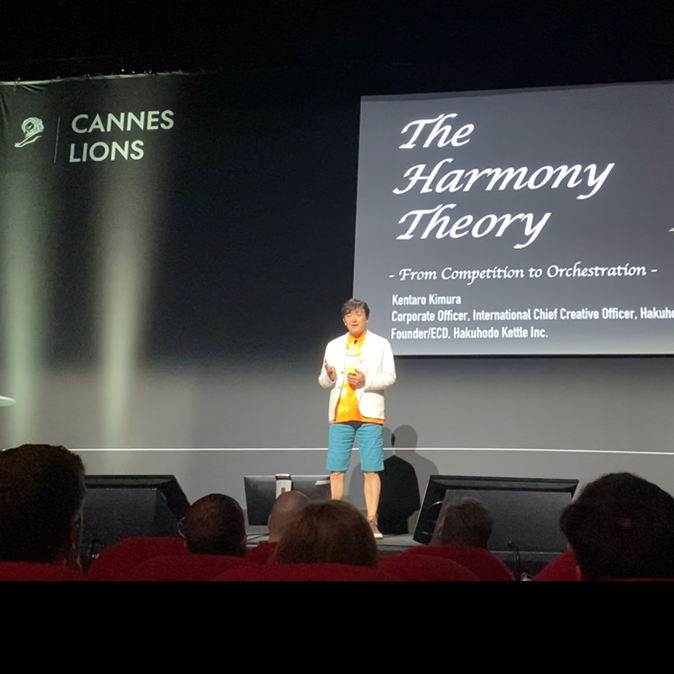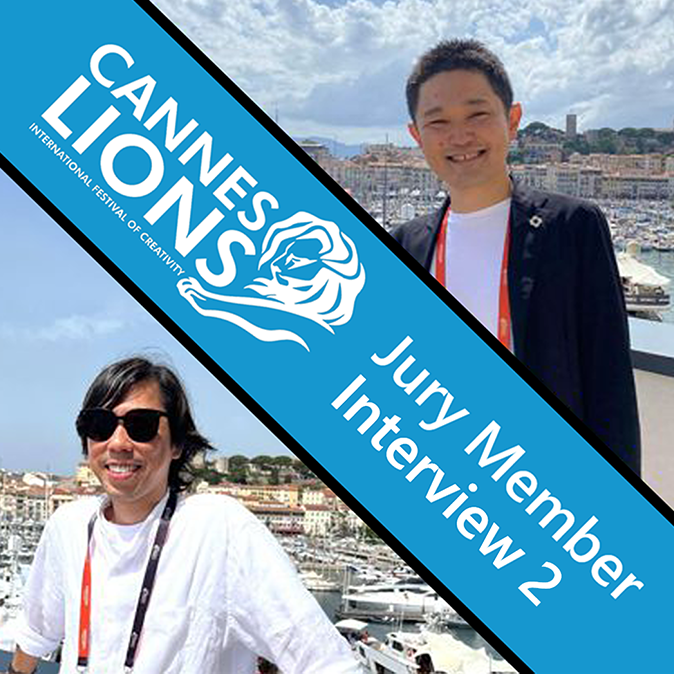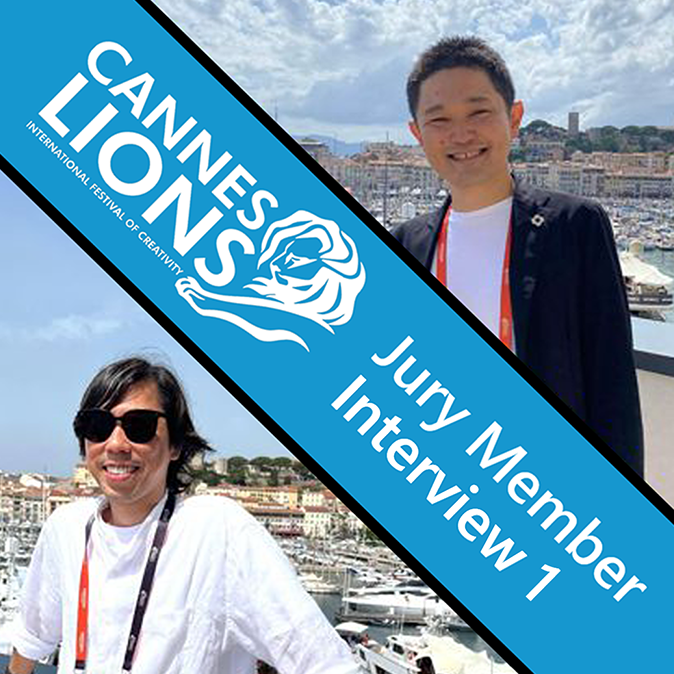- Events
- Viewpoints
- Awards
Three key marketing trends of the future: Lessons from Cannes
What did this year’s Cannes Lions Festival tell us about the zeitgeist of a world transformed by the Covid pandemic? Hakuhodo Brand Activation Director Asako Okuno reports on the seminars at this year’s event, which was held on site for the first time in three years. She looks at the state of brands, media, and the advertising industry today as described by different companies in their seminars.
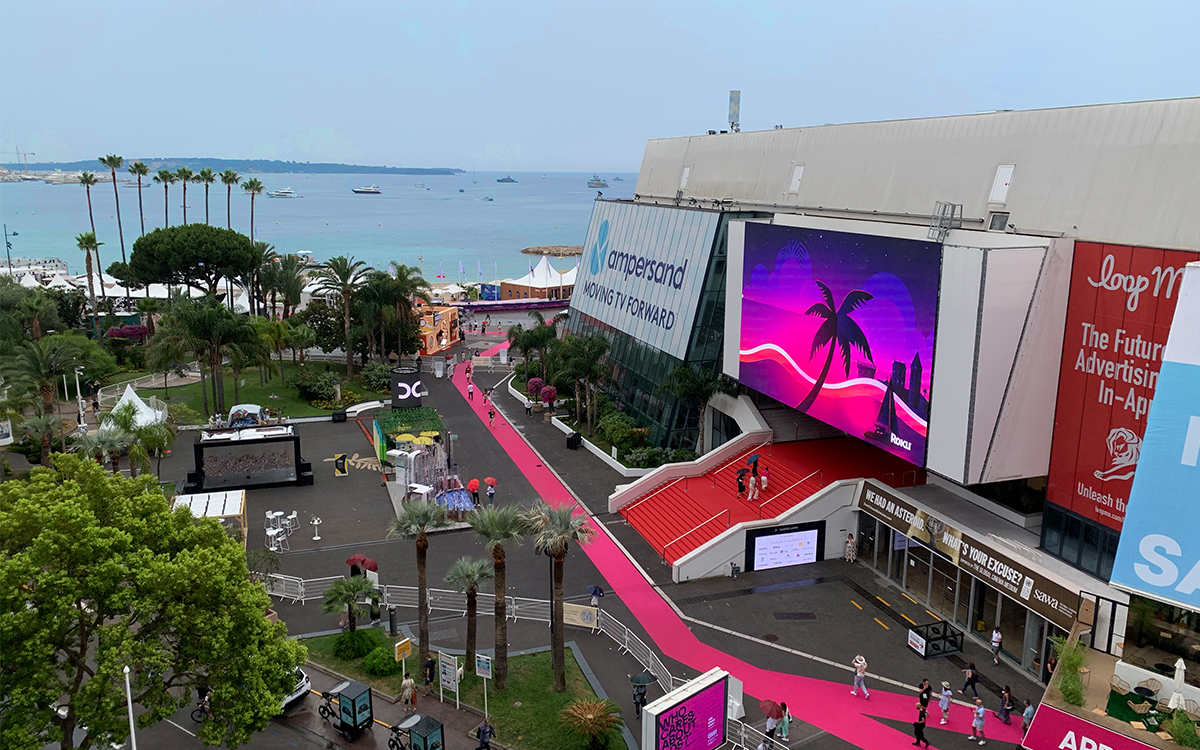
What are the Cannes seminars?
The seminars held during the Cannes Festival feature big names and recent newsmakers as speakers, typically from brands, the media, and agencies. There are quite a variety of sessions. Every year there are specific themes that most of the speakers focus on in their seminars. Buzzwords like “brand purpose” and “ethical consumerism,” which have only caught on in Japan over the past couple of years, were already being talked about as hot topics in many sessions seven or eight years ago. What’s discussed during the Cannes seminars is thus the source of trends among brands, media companies, and the advertising industry.
This year’s Cannes Lions featured the following six themes:
- It Pays to Be Green (The environment and sustainability)
- Represent the Under Represented (Action on human rights and DEI*)
- A Renewed Focus on Talent (Workstyles, organization, and expanding talent)
- Ready Player Two? (Preparing for the coming Web 3.0 era)
- Reframing Creative Effectiveness: Ideas as Investments (Updating benchmarks of success)
- Re-imagine, Reinvent and Re-build: It’s Time for a Factory Reset (Large-scale business transformation)
* DEI = Diversity, Equity and Inclusion
Taking these as our starting point, let’s examine three key trends that could offer lessons for marketers going forward. We’ll also look back on how global issues have evolved over the past several years.
Beyond purpose marketing
Cannes showcases issues of social concern, though the exact keywords used and perspectives adopted change dramatically every year. Long gone are the days when the social good and economic growth were seen as mutually exclusive. Over recent years, brands, media companies, and agencies worldwide have been working hard every day on building a sustainable ecosystem underpinned by economic activities like purpose marketing and brand activism. Now, the first Cannes Festival in three years has raised an important point: it’s time to take a second look at what brand purpose is supposed to be about.
Just as people who are socially aware and engaged were once derided as “do-gooders,” Japanese young people today increasingly talk of the Sustainable Development Goals (SDGs) in a mocking tone. While such mockery has been characterized as mere bluster arising from a sense of insecurity, it pokes fun at shallow self-congratulation unaccompanied by substance. Nor is this just a Japanese phenomenon. Signs of a similar trend are to be seen in the West as well. Gen Zers are said to be even more idealistic, and more skeptical, than Millennials, and they’re uncompromising in asking, “Where’s the beef?”—not just in their personal relationships but also when it comes to brands and businesses.
For me, one of the most pragmatic and memorable of this year’s sessions was “The Progressive Case Against Purpose Marketing.” This shared data that should serve as a cautionary tale against undertaking purpose marketing too lightly. Around 2018, when all the talk about the importance of brand purpose began, more and more brands started adopting a proactive stance, with active verbs like “join,” “become,” “drive,” “care,” “need,” “believe,” “help,” and “learn” featuring more prominently in their communications. Yet in a survey of brand trust, the score fell a whopping 10 percent compared to 2017, before the trend started. People, the seminar pointed out, are increasingly coming to suspect that brands are using purpose as a smokescreen to mislead them.
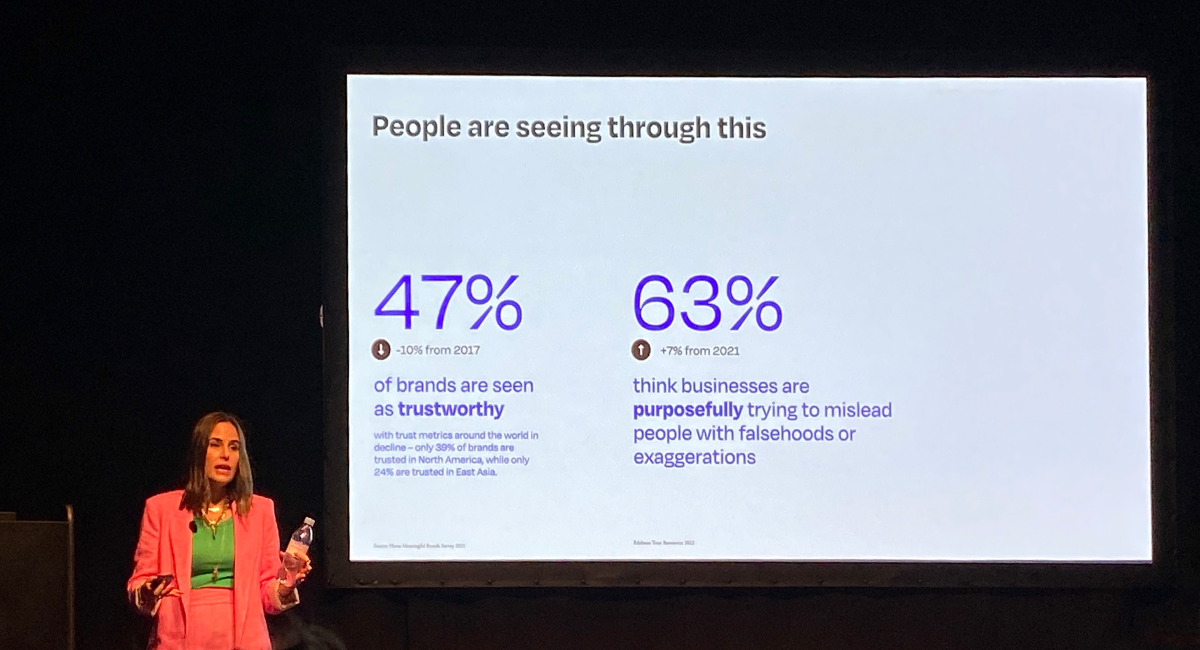
At R/GA’s session, the speaker, Yael Cesarkas, VP Executive Strategy Director at R/GA, emphasized that purpose is not designed to be used for marketing communications. And she sounded a stern warning. While many companies and brands are working on achieving targets under the SDGs, people are becoming less forgiving. Brands that only engage in shallow campaigns without any substance to back them up will fall by the wayside.
The sixth of the Cannes themes, “Re-imagine, Reinvent and Re-build: It’s Time for a Factory Reset,” addresses exactly this issue of substance, I think. It asks a challenging question: How can creativity fundamentally transform a business as it seeks to flesh out its purpose as a brand, taking into account the entire process from production to distribution and beyond?
Alcoholic beverage company Diageo, a pioneer of the shift to purpose marketing, has showcased many purpose-driven campaigns at its seminars in past years. This year it described, from a brand marketer’s perspective, the steps to building a brand with integrity based on purpose, from establishing a cooperative relationship with producers to creating a framework for communications. It also shared actual case studies.
In addition, there are various forms of action for change being undertaken by different stakeholders from their respective standpoints. One example showcased at Cannes was the #ChangeTheBrief Alliance, which was launched by women who had become deeply concerned about the environment in the course of producing advertising in Britain. Consisting mainly of people from the advertising and media sectors, the Alliance actively works across company boundaries sharing knowledge, providing support, and holding seminars on advising clients how to transform themselves into sustainable brands.
#ChangeTheBrief Alliance: https://www.changethebrief.org/
Thus, many of this year’s sessions went beyond the buzzword “brand purpose.” They talked at length about how to endow a product or business per se with a social function so that people can’t do without it, rather than just using purpose marketing as a strategy for burnishing its image.
Implementing brand purpose through business transformation
The jury members in each category and all the brands, media companies, and creative agencies involved in Cannes were unanimous in their unstinting admiration for brands that walk the talk—that don’t just get out the message about what their brand purpose is but actually achieve it through their products, services, and business.
The winner of this year’s Grand Prix for Creative Effectiveness, Contract for Change by American organic beer brand Michelob Ultra, epitomizes this trend. It is truly a case in point of brand purpose in action. Under this campaign, Michelob committed itself to providing vital technical and economic support to farmers making the challenging transition to organic farming and to signing a contract pledging to buy their barley. By completely overhauling the production of ingredients and the supply chain, this initiative has ultimately delivered a public good by benefiting the food and agriculture industries, not just the company itself. It has thus dramatically enhanced the brand’s value.
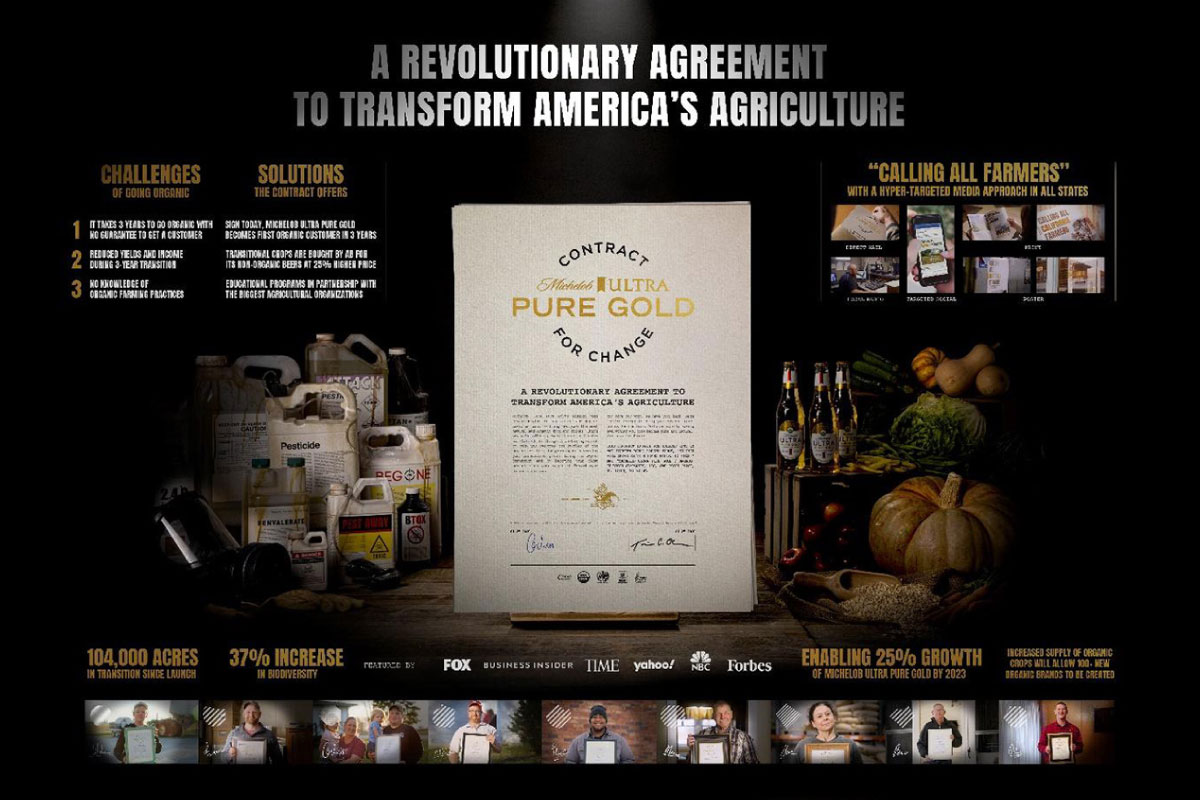 For the list of winners on the official Cannes Lions website, visit: Cannes Lions Awards (lovethework.com)
For the list of winners on the official Cannes Lions website, visit: Cannes Lions Awards (lovethework.com)* This is a subscription site, but you can still see visuals and videos of the winning entries.
The areas where many brands have to date engaged in innovation on social issues can be classified into four basic domains: (1) Purchase (how bought and where sold); (2) Ownership (how kept); (3) Utilization (how used); and (4) Disposal (how thrown away). Besides these, a new domain is emerging as people become more aware of the importance of sustainability: (0) The production process (raw materials through the supply chain). This attracted interest at Cannes as the new frontier.
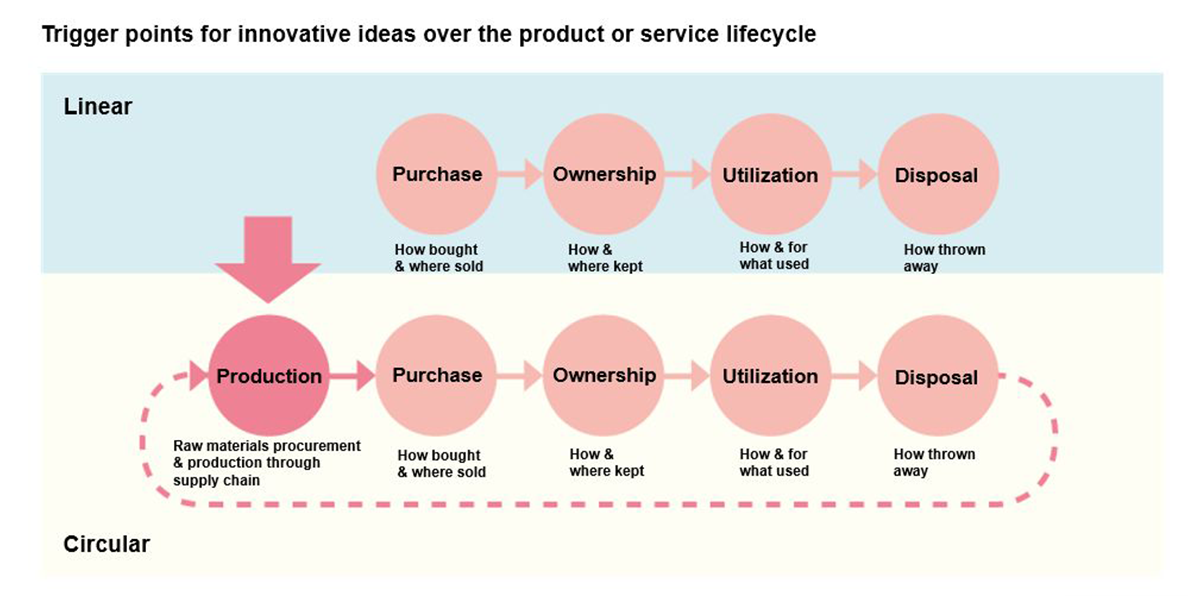
In recent years Cannes has attracted an increasing number of B2B entries, many of which have gone on to win awards. This year a new B2B category was established, and the first Grand Prix winner was Piñatex, an innovative material made from pineapple leaves. It was released in an unusual tie-up between fruit and food giant Dole and vegan leather developer Ananas Anam. Overhauling the Innovation Phase (0), Production (raw materials through the supply chain), made it possible to engineer the transition from a linear economy involving mass consumption and mass disposal to a circular economy. No wonder Piñatex stole the spotlight.
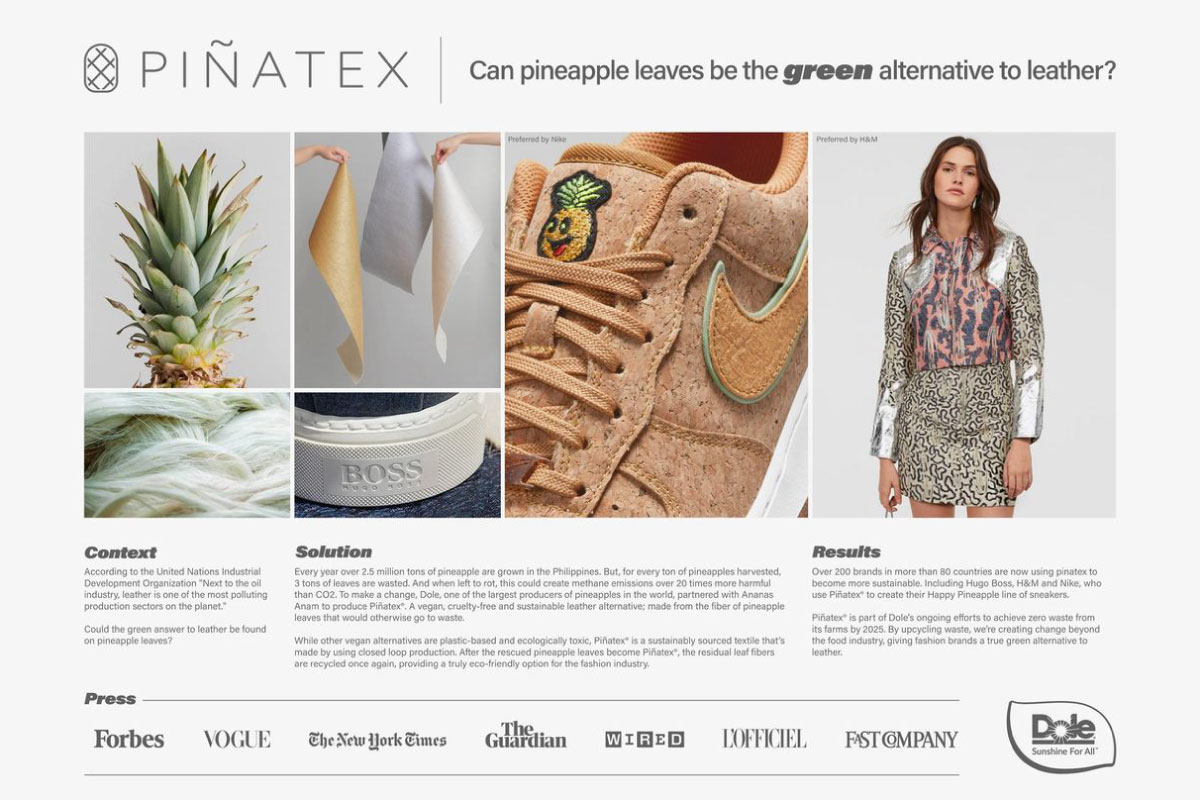 For the list of winners on the official Cannes Lions website, visit: Cannes Lions Awards (lovethework.com)
For the list of winners on the official Cannes Lions website, visit: Cannes Lions Awards (lovethework.com)* This is a subscription site, but you can still see visuals and videos of the winning entries.
Thus, the B2B phase, before the product reaches the buyer, now offers the most potential for the application of creativity to stretching your business. It shows increasing promise as a key trigger point for bringing about change.
The takeaway from these case studies can be reduced to a question. What forms of creativity are needed today? In the process of creative development, as companies and brands launch activities in society, how can we help build a happy relationship between brands and sei-katsu-sha*, one that benefits both (instead of unilaterally exploiting the latter)? Implementing brand purpose is the essential precondition. But that’s easier said than done.
The above Grand Prix winners that generated buzz in each category and most of the model cases showcased in the seminars share a universal trait. Behind them all, regardless of their size, lay a person with a passion who saw a problem that needed solving. They didn’t emerge during the planning process in response to a brief. They emerged when a dedicated individual on a personal crusade joined forces with a brand, as in the case of Piñatex, Dr. Carmen Hijosa (Founder and Chief Creative & Innovation Officer at Ananas Anam), and her partnership with Dole.
Japan is still plagued by many chronic problems that cannot be remediated within existing structures. One of the themes of this year’s Cannes Festival was HR-related: A Renewed Focus on Talent. Who now needs what resources? In Japan as well, collaboration with like-minded partners in other fields—startups, NPOs, activists, artists, creatives—will be the key to creativity that brings about purposeful change for companies and brands. As for agency creatives like us, our job isn’t just to build the necessary bridges. The most important thing is for us to attract partners and opportunities by getting personally involved, always being aware as individual sei-katsu-sha, and staying on the move.
This year’s Cannes Festival drove home to me how such personal dedication to finding solutions has the power to motivate people to act. It is a modern form of creativity that drives change.
The coming Web 3.0 era
Finally, Web 3.0, a much-talked-about subject in every industry these days, was one of the hottest topics this year at Cannes with its large turnout of media companies and brands. In Japan, it is quickly becoming a familiar concept as VR headsets catch on, platforms evolve, and legislation regulating NFT transactions is debated. From the discussion on the metaverse at this year’s Cannes, I’d like to share two takeaways that should prove useful to brands preparing for the coming Web 3.0 era.
First, the importance of having a virtual identity as a brand. R/GA’s session “Who Do You Want to Be in the Metaverse?” explored the relationship between users and digital avatars in the metaverse while citing various case studies and drawing on the expertise of pioneers. In a survey by R/GA, more than half of users responded that they felt more comfortable expressing themselves in the form of a digital avatar than in reality. That suggests that people have a virtual identity different from the flesh-and-blood selves with which brands have dealt in the past. It was emphasized that the metaverse will in the future become an important arena for building engagement and loyalty as a brand.
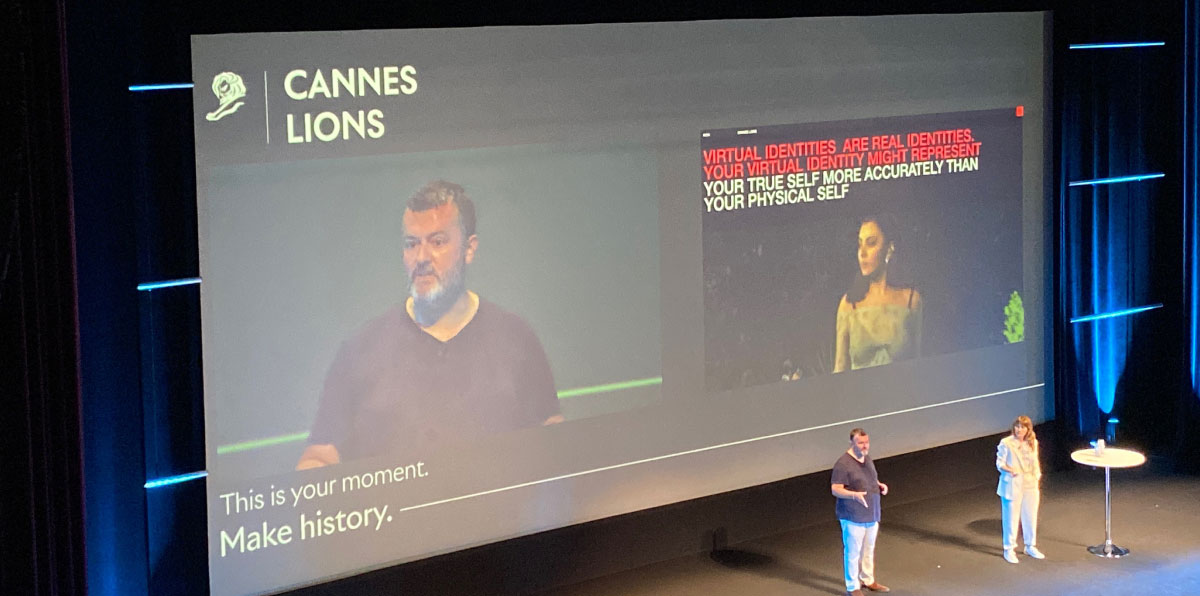
How should brands interact with sei-katsu-sha who are more truly themselves as avatars than when they are out and about in the real world? Insights derived from conventional demographics are no longer valid. Brands need to engage more closely with the individual’s true identity.
The ability to enjoy yourself as a customized digital avatar in a virtual environment has been around for over twenty years in MMORPGs and other online games. What sets the Web 3.0 metaverse apart is this. It is a digital community and communication forum where economic activity also takes place. It doesn’t matter whether or not you have a VR headset, nor if you have to have a clear objective as in a game.
One tip on how brands can bond with sei-katsu-sha in the metaverse was provided by Global Chief Strategy Officer Tom Morton. As he put it, you need to build a co-creative relationship with people, on equal terms, inside the community—like the Air Max campaign that Nike created with kids inside Roblox (https://www.nike.com/lu/en/kids-airtopia)**.
** Roblox is a game loved by kids worldwide. The users—kids—were invited to join in launching an Air Max anniversary campaign in Nikeland, Nike’s virtual world inside Roblox.
Most metaverse environments currently available in Japan have been pioneered by online games. Besides serving as a gaming forum, they also offer a place to communicate, and many communities have been created in them by users. As various companies and brands flock to the metaverse and an economic zone linked to the real world emerges, these online playgrounds can be expected to evolve into a living zone in their own right. Companies and brands will need to partner with the sei-katsu-sha who gather there in creating a new world separate from offline society.
In the metaverse, then, the priority for companies and brands will no longer be broadening their reach as in the past. Instead, the critical factor will be depth—their personality as a member of the community. To prepare for the necessary action, they will need to redefine their brand identity in terms of the manifold elements that make up their personality: behavioral orientation, mindset, POV, manner of speaking, tone of voice, and so forth.
The second takeaway relates to digitalizing brand assets. Many fashion brands have been quick to expand into the metaverse. Fashion is a key element for people enjoying being their true selves in virtual space, unrestricted by physical reality. Already many digital items sell for more than merchandise available in bricks-and-mortar stores. As NFTs catch on, expect the D2A (Direct to Avatar) business, as opposed to D2C (Direct to Consumer), to pick up momentum across a wide variety of digital items besides fashion wear.
For that to happen, brand assets will need to be digitalized first. Like redefining the brand’s digital identity, digitalizing all the brand’s assets will make it easier to expand into different content formats. That means converting products, the logo, and brand characters into 3D data, and establishing guidelines for the digitalization process.
And then there are NFTs, which grant ownership to digital data assets and certify them as unique, even though they can theoretically be duplicated ad infinitum. The associated information on who the issuer is and how the asset was bought and from where or whom should come to assume great value. Here brand power in the form of trust and empathy will be of the essence. Until now, consumer behavior in online games and such has tended to be understood in terms of digital experiential value, where nothing tangible is left over. As someone once famously remarked, “In-game purchases are like eating a meal.” In the digital world of Web 3.0, the nature of that value has the potential to be transformed. That makes it all the more important to contribute to the community’s sound economic development by being a community member who truly understands sei-katsu-sha’s virtual identities and is committed to the co-creation of a new world with them.

* “Sei-katsu-sha” is a term we use to describe people not simply as consumers, but as fully rounded individuals with their own lifestyles, aspirations and dreams.













